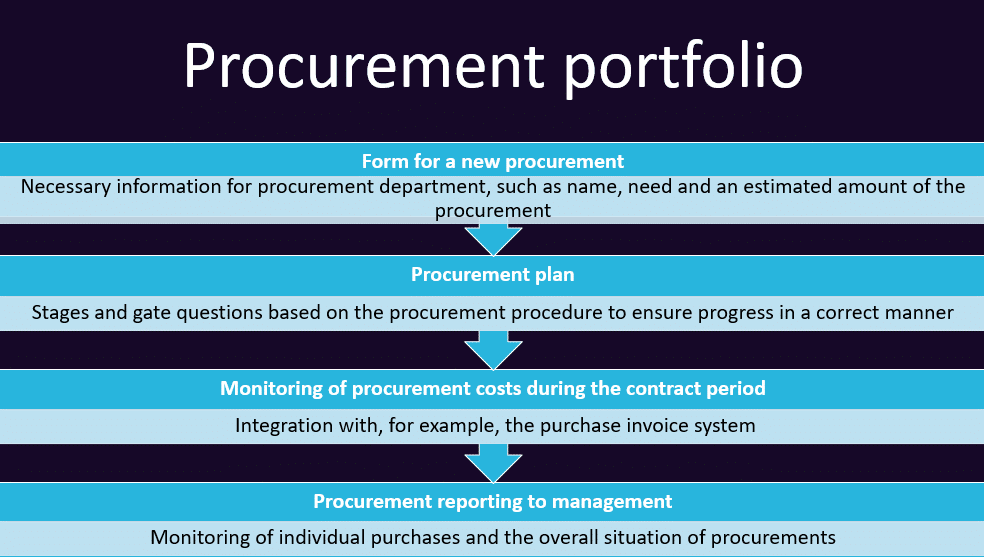The procurement portfolio enables the smooth execution of procurements and compliance with the law and the budget.
The procurement portfolio developed by Solu Digital facilitates procurement planning and preparation work, which can be used to ensure that all public sector procurements proceed following the related laws and remain on budget and schedule.
Monitoring the costs of legal tenders and partners selected through tenders throughout the contract period can be done conveniently in one tool.
The tool helps to ensure that the procurement does not fail due to a formal mistake, an unclear mandate, or a misjudgment of the size of the procurement.
The procurement portfolio ensures that the procurements are correct
The procurement portfolio serves, for example, as a common tool for both the business unit and the procurement department. Procurement planning begins when a member of the business organization fills in the new procurement form. In addition to the name of the procurement and the description of the need, the form can be used to indicate, for example, an estimate of the amount of the procurement.
The business unit can also give the procurement a preliminary priority to indicate how important the unit perceives the procurement in question to itself with other procurements.
A procurement department typically has many types of procurement procedures: some procurements have an open or limited procedure, and some have a framework arrangement – all procurement procedures are legal channels of their own, which are subject to their own rules.
Based on the information provided, the procurement department can choose the right procedure for the procurement in question, which in turn determines the correct checkpoints and steps, based on which the procurement can be progressed on the procurement portfolio.

The procedure determines the stages of procurement progress
The information in the form is saved as a new purchase in the procurement plans and the purchase is transferred from the business unit to be processed by the procurement function. The procurement department can check the basic information about the procurement plan, which is the procurement need that has not yet been processed, to ensure that the procurement can be planned and prepared.
In the procurement portfolio, the selection of the procedure affects the gate questions and stages of the procurement progress. Each stage has its own set of questions, where only passing the mandatory answers guarantees progress to the next stage. With the help of the answers, it is ensured that nothing is forgotten in progressing the procurement and that it proceeds by the law and on schedule.
The stages of procurement progress and related decisions as well as other considerations such as schedules, progress status, or risks, can be recorded in the diary section of the procurement portfolio so that you can return to them later if necessary.
The procurement portfolio works on the one hand as a project tool and on the other hand as a legal assistant, which ensures that the formal aspects are executed correctly.
Cost tracking ensures a successful procurement
When the bidding process is complete and the partner has been selected, the procurement moves to the contract period phase in the procurement portfolio. During this phase the procurement function can, if necessary, stay involved in the project and monitor procurement costs so that the original procurement threshold value will not exceed.
The accumulated costs of the contract period can be collected, for example, from the organization’s purchase invoice system and monitored on the Finance tab of the procurement portfolio during the entire life cycle of the procurement.
The management and the procurement department get extensive information about individual procurements and all procurements with the Power BI reports of the procurement portfolio.
Watch the video about Business Finland’s experiences with the procurement portfolio:
Jari Kyläjärvi
Director, Partner








